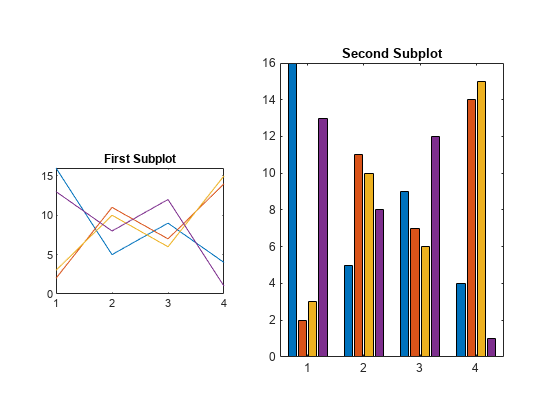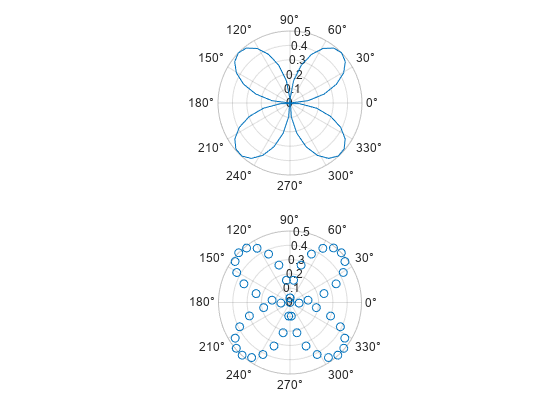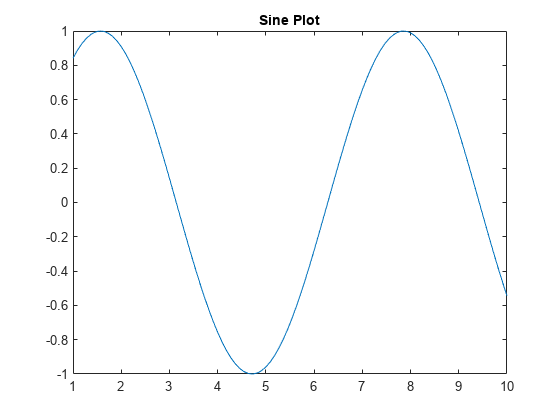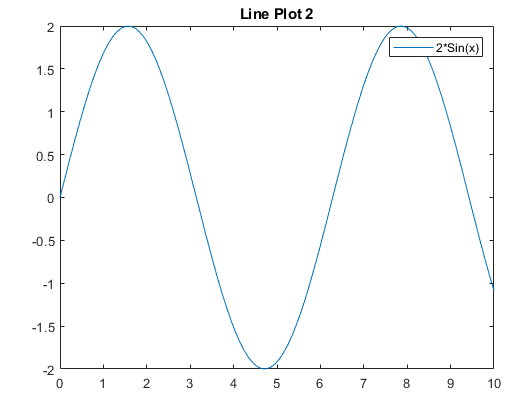subplot
在各个分块位置创建坐标区
语法
说明
注意
与 subplot 相比,推荐使用 tiledlayout,因为它使您能够创建具有可调图块间距、根据图窗大小重排的图块以及放置更合理的颜色栏和图例的布局。
subplot( 将当前图窗划分为 m,n,p)m×n 网格,并在 p 指定的位置创建坐标区。MATLAB® 按行号对子图位置进行编号。第一个子图是第一行的第一列,第二个子图是第一行的第二列,依此类推。如果指定的位置已存在坐标区,则此命令会将该坐标区设为当前坐标区。
subplot(___, 使用一个或多个名称-值对组参量修改坐标区属性。在所有其他输入参量之后设置坐标区属性。Name,Value)
示例
输入参数
名称-值参数
提示
要清除图窗的内容,请使用
clf。例如,您可以在创建新子图布局之前清除图窗中的现有子图布局。要叠加坐标区,请改用
axes命令。subplot函数会删除与新坐标区重叠的现有坐标区。例如,subplot('Position',[.35 .35 .3 .3])会删除所有底层坐标区,但axes('Position',[.35 .35 .3 .3])会将新坐标区置于图窗的中部而不删除底层坐标区。subplot(111)是一个例外,其行为与subplot(1,1,1)不同。出于向后兼容的原因,subplot(111)是子图的一种特殊情况,它不立即创建坐标区,而是设置图窗,以便接下来的图形命令执行clf reset。接下来的图形命令将删除所有图窗子级,并在默认位置创建新的坐标区。subplot(111)不返回Axes对象,如果代码指定了返回参量,将会发生错误。
替代功能
使用 tiledlayout 和 nexttile 函数创建可配置的绘图平铺。配置选项包括:
对绘图之间和布局边缘周围间距的控制
布局顶部共享标题的选项
共享 x 轴和 y 轴标签的选项
用于控制分块是固定大小还是可以调整的可变大小的选项
有关详细信息,请参阅合并多个绘图。
版本历史记录
在 R2006a 之前推出














